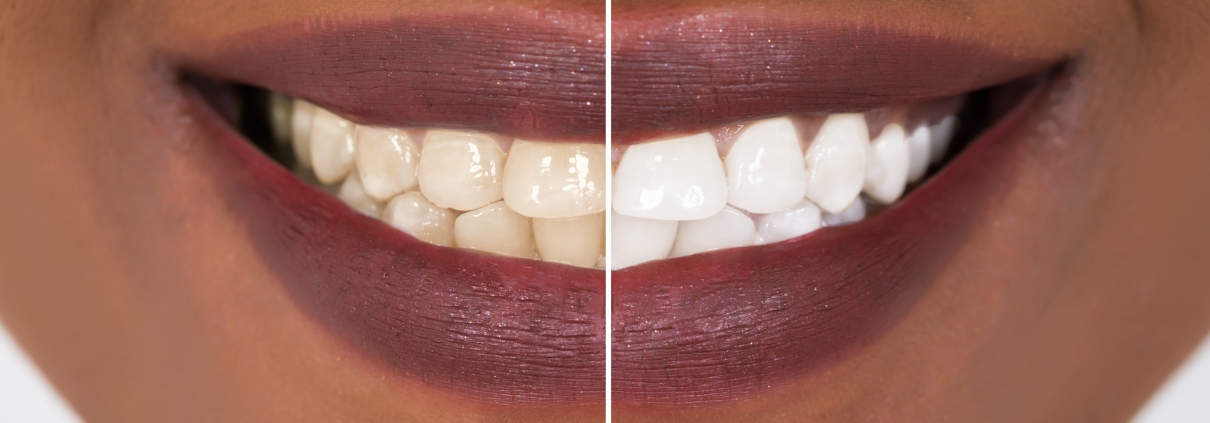Tooth whitening
Tooth whitening is a cosmetic dental procedure that involves removing stains and discoloration from the surface of teeth to achieve a brighter, more attractive smile. In this article, we will discuss the different types of tooth whitening procedures, their benefits, and potential risks.
Types of Tooth Whitening Procedures
In-office bleaching
In-office bleaching, also known as chair-side bleaching, is a professional tooth whitening procedure that is performed in a dentist’s office. A high concentration of hydrogen peroxide gel is applied to the teeth and activated by a special light or laser. The procedure typically takes around an hour to complete and can produce immediate results.
At-home bleaching
At-home bleaching involves using a custom-fitted tray that is filled with a lower concentration of hydrogen peroxide gel. The tray is worn for a specified amount of time each day for several weeks. This type of tooth whitening is less expensive than in-office bleaching but can take longer to produce results.
Over-the-counter products
Over-the-counter tooth whitening products, such as whitening toothpaste, strips, and gels, are available at drugstores and supermarkets. These products contain lower concentrations of whitening agents than professional-grade products, and results may be less dramatic.
Benefits of Tooth Whitening
Improved appearance
Tooth whitening can improve the appearance of teeth that are discolored or stained from age, smoking, or consumption of certain foods and drinks.
Boost in self-confidence
A brighter, more attractive smile can boost self-confidence and improve social and professional interactions.
Non-invasive
Tooth whitening is a non-invasive cosmetic procedure that does not require anesthesia or surgery.
Risks of Tooth Whitening
Tooth sensitivity
Tooth sensitivity is a common side effect of tooth whitening. It usually resolves on its own within a few days or weeks, but in some cases, it can persist or worsen.
Gum irritation
Gum irritation can occur if the whitening agent comes into contact with the gums. This can cause redness, swelling, and discomfort.
Temporary results
Tooth whitening is not a permanent solution, and results can fade over time, particularly if the patient continues to consume staining substances or does not practice good oral hygiene.
In conclusion, tooth whitening is a cosmetic dental procedure that can improve the appearance of teeth and boost self-confidence. In-office bleaching, at-home bleaching, and over-the-counter products are the three types of tooth whitening procedures. Tooth sensitivity, gum irritation, and temporary results are potential risks of tooth whitening. If you are considering tooth whitening, it is important to discuss the procedure with your dentist to determine the best treatment plan for your individual needs.




